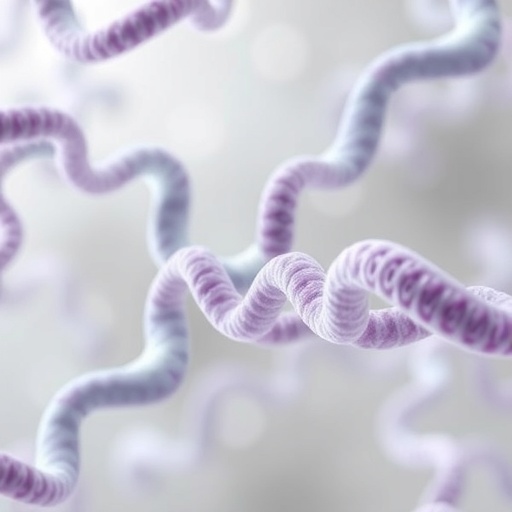In the ongoing evolution of proteomics, understanding post-translational modifications (PTMs) has become critical. Among these modifications, malonylation, a less commonly studied yet impactful alteration of lysine residues on proteins, presents intriguing opportunities for further inquiry. Recognizing and mapping these malonylation sites is not merely an academic exercise; it carries implications for deciphering various biological processes and disease mechanisms. In their recent work, researchers Xu, Qian, and Yang propose a novel methodology that combines AlphaFold2, an advanced protein structure prediction tool, with ensemble learning algorithms to enhance the identification of malonylation sites significantly.
The significance of malonylation extends beyond basic biochemistry. This PTM has been implicated in diverse biological functions, from cellular signaling to metabolic regulation. The challenge lies in the fact that traditional methods of identifying these sites are often inefficient and prone to errors. This barrier has hindered a comprehensive understanding of malonylated proteins and their roles. The research team’s approach seeks to bridge this gap, utilizing AlphaFold2 to predict protein structures more accurately, thereby enabling better identification of potential malonylation sites.
AlphaFold2 has revolutionized the field of structural biology by providing unprecedented accuracy in predicting protein structures from amino acid sequences. This tool relies on deep learning algorithms that analyze evolutionary data, resulting in predictions that often rival experimentally determined structures. Xu and colleagues harness this power to analyze the structural features associated with malonylation, which can help pinpoint the precise locations where this modification occurs. In essence, the researchers aim to leverage AlphaFold2 not just for structural prediction but as a foundation for understanding the functional landscape of malonylated proteins.
Coupled with this structural data, the researchers employ ensemble learning, a machine learning paradigm that combines predictions from multiple models to improve accuracy and robustness. This technique is particularly effective for addressing complex biological data, where variability and noise can obscure true signals. By integrating predictions from various algorithms, the team enhances their ability to discern genuine malonylation sites from potential false positives. The marriage of AlphaFold2 and ensemble learning presents a multifaceted tool for protein analysis, promising robust and reliable results.
The implications of these advancements are profound. Accurate identification of malonylation sites could lead to breakthroughs in understanding cellular metabolism, particularly in conditions like cancer, diabetes, and neurodegenerative diseases, where altered protein modifications often play a crucial role. Furthermore, beyond just identifying these sites, understanding the functional outcomes of malonylation could provide novel insights into therapeutic targets and strategies.
Moreover, the work of Xu and colleagues does not exist in isolation; it is part of a vibrant tapestry of research exploring the growing landscape of PTMs. As tools and techniques for studying these modifications evolve, researchers are increasingly called upon to integrate computational approaches with experimental validation. The ability to predict and experimentally confirm malonylation sites will drive forward a more integrated understanding of how PTMs influence protein function and cellular dynamics.
As the research community continues to embrace machine learning and artificial intelligence, the challenges lie not only in the development of new algorithms but also in the interoperability and validation of findings across different platforms and repositories. Xu et al.’s work signifies a move toward more sophisticated analyses that can be applied broadly across various protein modifications, solidifying the importance of computational tools in modern biological research.
Looking ahead, several avenues warrant exploration. While the integration of AlphaFold2 and ensemble learning provides a compelling approach to malonylation site identification, further optimization and refinement of these methods could yield even more powerful results. Additionally, collaboration between computational and experimental scientists will be essential in validating predictions and interpreting biological significance.
In conclusion, as the boundaries of proteomics and protein modification research continue to expand, the innovative strategies put forth by Xu, Qian, and Yang present a hopeful outlook. Their work not only addresses the immediate challenges of malonylation site identification but also sets the stage for future exploration of PTMs as vital components of cellular functionality. As we deepen our understanding of these complex processes, the potential for significant discoveries across various fields of biology comes closer into reach.
The convergence of advanced computational methods and biological inquiry opens doors to novel therapeutic avenues, making this research both timely and essential. In an age where precision medicine and targeted therapies are the future of healthcare, exploring and understanding protein modifications such as malonylation could well be key to unveiling new treatment strategies and enhancing patient outcomes.
Subject of Research: Malonylation site identification in proteins using AlphaFold2 and ensemble learning techniques.
Article Title: Enhancing the identification of malonylation sites using AlphaFold2 and ensemble learning.
Article References:
Xu, L., Qian, Y., Yang, J. et al. Enhancing the identification of malonylation sites using AlphaFold2 and ensemble learning.
Mol Divers (2025). https://doi.org/10.1007/s11030-025-11357-6
Image Credits: AI Generated
DOI:
Keywords: Malonylation, post-translational modifications, AlphaFold2, ensemble learning, protein structure prediction, proteomics.
Tags: AlphaFold2 protein structure predictionchallenges in PTM identificationdeep learning in structural biologyenhancing accuracy in protein structure predictionensemble learning algorithms in biologyidentification of malonylated proteinsimpact of malonylation on cellular functionsimplications of malonylation in disease mechanismsmalonylation site detectionnovel methodologies in protein researchpost-translational modifications in proteomicsunderstanding biological processes through malonylation





